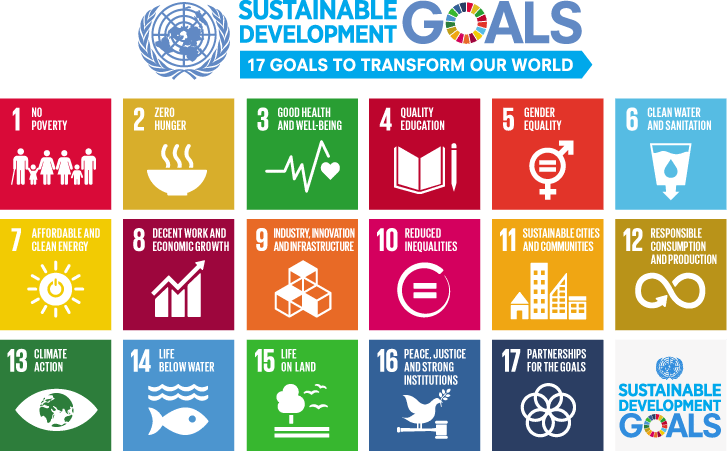In today’s world, achieving sustainable development is crucial for creating a better future for all. The United Nations’ Sustainable Development Goals (SDGs) provide a roadmap for addressing global challenges and improving social, economic, and environmental well-being. Here we will explore the vital role of landscape architecture in advancing the SDGs and creating a sustainable future for our communities.
The UN Sustainable Development Goals (SDGs)
The Sustainable Development Goals (SDGs) are a comprehensive set of 17 interconnected goals established by the United Nations in 2015. They aim to address urgent global issues and promote sustainable development worldwide. Each goal focuses on a specific aspect, ranging from poverty eradication and education to climate action and biodiversity conservation. The SDGs are designed to be integrated and interconnected, recognizing that progress in one area can positively impact others. By addressing social, economic, and environmental dimensions simultaneously, the SDGs strive for holistic and inclusive development. To achieve the SDGs, collaboration and concerted efforts are necessary across various sectors, including governments, businesses, communities, and professionals from different disciplines. Landscape architecture, with its unique ability to integrate ecological, social, and economic considerations, plays a pivotal role in driving sustainable development and contributing to the SDGs.
The Power of Landscape Architecture in Sustainable Development
Landscape architecture holds tremendous potential to contribute to numerous Sustainable Development Goals (SDGs). While we will explore a few examples in this article, it’s important to note that these represent just a fraction of the ways landscape architecture can make a difference. From creating sustainable cities and communities to preserving biodiversity and ecosystems, landscape architecture plays a vital role in advancing the SDGs and fostering a more sustainable future for all.
One significant area where landscape architecture makes a difference is in creating sustainable cities and communities, aligned with SDG 11: Sustainable Cities and Communities. Landscape architects excel in designing urban spaces that prioritize walkability, accessibility, and the integration of green infrastructure. By incorporating nature into cities, landscape architects enhance the quality of life, promote physical and mental well-being, and foster social interaction.
Another crucial role of landscape architecture lies in preserving biodiversity and ecosystems, supporting the objectives of SDG 15: Life on Land. Landscape architects employ careful planning and design strategies to create landscapes that protect and restore natural habitats, promote ecological connectivity, and facilitate the regeneration of natural systems. This approach not only conserves our natural heritage but also provides critical ecosystem services necessary for human well-being.
Landscape architects also contribute to climate action, as outlined in SDG 13: Climate Action. By designing climate-responsive landscapes, green infrastructure, and sustainable drainage systems, landscape architects help mitigate the impacts of climate change, such as flooding and heat island effects. Additionally, their focus on designing resilient landscapes enables communities to adapt and recover from extreme weather events.
Moreover, landscape architects actively promote inclusivity and equity, aligning with SDG 10: Reduced Inequalities and SDG 5: Gender Equality. Through community engagement, consideration of diverse needs and perspectives, and the creation of accessible public spaces, landscape architects foster social integration and promote social equity.
By collaborating with urban planners, architects, engineers, policymakers, and local communities, landscape architects create innovative solutions that address the complex challenges of sustainable development. An integrated design approach ensures that environmental, social, and economic factors are considered holistically, bridging the gaps between various sectors and stakeholders.
Through the transformative power of landscape architecture, we can create a future that embraces sustainable development, enhances the well-being of communities, and preserves our planet’s natural resources. By embracing the principles of the SDGs and leveraging the expertise of landscape architects, we can work together towards a more sustainable, inclusive, and resilient world.
To delve deeper into the topic and gain a comprehensive understanding, read the document “A Landscape Architecture Guide to the 17 Sustainable Development Goals”:
https://www.iflaeurope.eu/assets/docs/SDG%2BFINAL.pdf



Leave a Reply